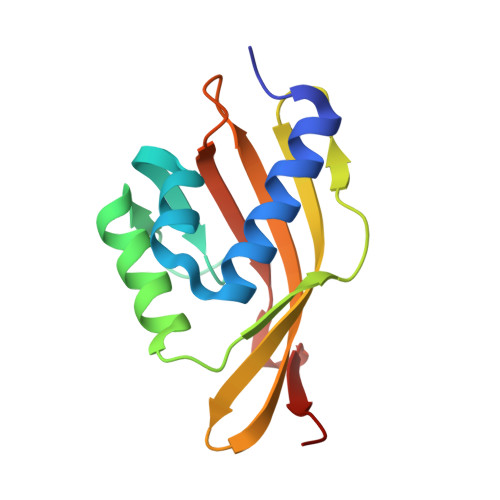Evaluating the catalytic contribution from the oxyanion hole in ketosteroid isomerase.
Schwans, J.P., Sunden, F., Gonzalez, A., Tsai, Y., Herschlag, D.(2011) J Am Chem Soc 133: 20052-20055
- PubMed: 22053826
- DOI: https://doi.org/10.1021/ja208050t
- Primary Citation of Related Structures:
3T8N, 3T8U - PubMed Abstract:
Prior site-directed mutagenesis studies in bacterial ketosteroid isomerase (KSI) reported that substitution of both oxyanion hole hydrogen bond donors gives a 10(5)- to 10(8)-fold rate reduction, suggesting that the oxyanion hole may provide the major contribution to KSI catalysis. But these seemingly conservative mutations replaced the oxyanion hole hydrogen bond donors with hydrophobic side chains that could lead to suboptimal solvation of the incipient oxyanion in the mutants, thereby potentially exaggerating the apparent energetic benefit of the hydrogen bonds relative to water-mediated hydrogen bonds in solution. We determined the functional and structural consequences of substituting the oxyanion hole hydrogen bond donors and several residues surrounding the oxyanion hole with smaller residues in an attempt to create a local site that would provide interactions more analogous to those in aqueous solution. These more drastic mutations created an active-site cavity estimated to be ~650 Å(3) and sufficient for occupancy by 15-17 water molecules and led to a rate decrease of only ~10(3)-fold for KSI from two different species, a much smaller effect than that observed from more traditional conservative mutations. The results underscore the strong context dependence of hydrogen bond energetics and suggest that the oxyanion hole provides an important, but moderate, catalytic contribution relative to the interactions in the corresponding solution reaction.
Organizational Affiliation:
Department of Biochemistry, Stanford University, Stanford, California 94305, USA.
















